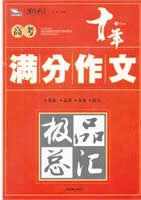A. Sailors’ strength. B. Wave levels.
C. Wind directions. D. Size of sails.
46. What does the word “It” underlined in Paragraph 4 refer to?
A. The boat. B. The wind. C. The sail. D. The angle.
47. What do you have to do when sailing against the wind?
A. Move in a straight line. B. Allow the sail to flap.
C. Lower the sail. D. Tack the boat.
48. Where can you probably find the text?
A. In a popular magazine. B. In a tourist guidebook.
C. In a physics textbook. D. In an official report.
(C)
Facial expressions carry meaning that is determined by situations and relationships. For example, in American culture (文化) the smile is in general an expression of pleasure. Yet it also has other uses. A woman’s smile at a police officer does not carry the same meaning as the smile she gives to a young child. A smile may show love or politeness. It can also hide true feelings. It often causes confusion (困惑) across cultures. For example, many people in Russia smiling at strangers in public to be unusual and even improper. Yet many Americans smile freely at strangers in public places (although this is less common in big cities). Some Russians believe that Americans smile in the wrong places; some Americans believe that Russians don’t smile enough. In Southeast Asian culture, a smile is frequently used to cover painful feelings. Vietnamese people may tell a sad story but end the story with a smile.
Our faces show emotions (情感), but we should not attempt to “read” people from another culture as we would “read” someone from our own culture. The fact that members of one culture do not express their emotions as openly as do members of another does not mean that they do not experience emotions. Rather, there are cultural differences in the amount of facial expressions permitted. For example, in public and in formal situations many Japanese do not show their emotions as freely as Americans do. When with friends, Japanese and Americans seem to show their emotions similarly.
It is difficult to generalize about Americans and facial expressiveness because of personal and cultural differences in the United States. People from certain cultural backgrounds in the United States seem to be more facially expressive than others. The key is to try not to judge people whose ways of showing emotion are different. If we judge according to our own cultural habits, we may make the mistake of “reading” the other person incorrectly.
49. What does the smile usually mean in the U.S.?
A. Love. B. Politeness. C. Joy. D. Thankfulness.
50. The author mentions the smile of the Vietnamese to prove that smile can ___ .
A. show friendliness to strangers B. be used to hide true feelings
C. be used in the wrong places D. show personal habits
51. What should we do before attempting to “read” people?
A. Learn about their relations with others.
B. Understand their cultural backgrounds.
C. Find out about their past experience.
D. Figure out what they will do next.
52. What would be the best title for the test?
A. Cultural Differences B. Smiles and Relationship
C. Facial Expressiveness D. Habits and Emotions
(D)
ADDIS ABABA, Ethiopia – One of the world’s most famous fossils (化石) – the 3.2 million-year-old Lucy skeleton (骨骼) unearthed in Ethiopia in 1974 – will go on an exhibition tour abroad for the first time in the United States, officials said Tuesday.
Even the Ethiopian public has only seen Lucy twice. The Lucy on exhibition at the Ethiopian National Museum in the capital, Addis Ababa, is a replica while the real remains are usually locked in a secret storeroom. A team from the Museum of National Science in Houston, Texas, spent four years discussing with the Ethiopians for the U.S. tour, which will start in Houston next September.
“Ethiopia’s rich culture of both the past and today, is one of the best kept secrets in the world,” said Joel Bartsch, director of the Houston museum.
The six-year tour will also go to Washington, New York, Denver and Chicago. Officials said six other U.S. cities may be on the tour. But they said plans had not been worked out.
Travelling with Lucy will be 190 other fossils.
Lucy, her name taken from a Beatles song that played in a camp the night of her discovery, is part of the skeleton of what was once a 3-foot-tall ape-man (猿人).
53. The author writes this text mainly to ___ .
A. introduce a few U.S. museums
B. describe some research work
C. discuss the value of an ape-man
D. report a coming event
54. What does the words “a replica” in Paragraph 2 refer to?
A. A painting of the skeleton. B. A photograph of Lucy
C. A copy of the skeleton. D. A written record of Lucy.
55. How many cities has Lucy’s U.S. tour plan already included?
A. Four. B. Five. C. Six. D. Eleven.
56. What was the skeleton named after?
A. An ape-man. B. A song. C. A singer. D. A camp.
(E)
Make Up Your Mind to Succeed
Kind-hearted parents have unknowingly left their children defenseless against failure. The generation born between 1980 and 2001 grew up playing sports where scores and performance were played down because “everyone’s winter.” And their report cards sounded more positive (正面的) than ever before. As a result, Stanford University professor Carol Dweck, PhD, calls them “the overpraised generation.”
Dweck has been studying how people deal with failure for 40 years. Her research has led her to find out two clearly different mind-sets that have a great effect on how we react to it. Here’s how they work:
A fixed mind-set is grounded in the belief that talent (才能) is genetic – you’re a born artist, point guard, or numbers person. The fixed mind-set believes it’s sure to succeed without much effort and regards failure as personal shame. When things get difficult, it’s quick to blame, lie, and even stay away from future difficulties.
On the other hand, a growth mind-set believes that no talent is entirely heaven-sent and that effort and learning make everything possible. Because the ego (自尊) isn’t on the line as much, the growth mind-set sees failure as a chance rather than shame. When faced with a difficulty, it’s quick to rethink, change and try again. In fact, it enjoys this experience.
We are all born with growth mind-sets. (Otherwise, we wouldn’t be able to live in the world.) But parents, teachers, and instructors often push us into fixed mind-sets by encouraging certain actions and misdirecting praise. Dweck’s book, Mind-set: The New Psychology of Success, and online instructional program explain this in depth. But she says there are many little things you can start doing today to make sure that your children, grandchildren and even you are never defeated by failure.
57. What does the author think about the present generation?
A. They don’t do well at school. B. They are often misunderstood.
C. They are eager to win in sports. D. They are given too much praise.
58. A fixed mind-set person is probably one who ___ .
A. doesn’t want to work hard
B. cares a lot about personal safety
C. cannot share his ideas with others
D. can succeed with the help of teachers
59. What does the growth mind-set believe?
A. Admitting failure is shameful.
B. Talent comes with one’s birth.
C. Scores should be highly valued.
D. Getting over difficulties is enjoyable.
60. What should parents do for their children based on Dweck’s study?
A. Encourage them to learn from failures.
B. Prevent them from making mistakes.
C. Guide them in doing little things.
D. Help them grow with praise.
 ,我们将会及时处理。
,我们将会及时处理。 | 典藏 运用 改变 提高.. 定价:¥48.00 优惠价:¥48.00 更多书籍 |
 | 近几年,高校自主招生考试已成为高考的一种重要的补充形式,日益受到考生、社会.. 定价:¥45.00 优惠价:¥45.00 更多书籍 |